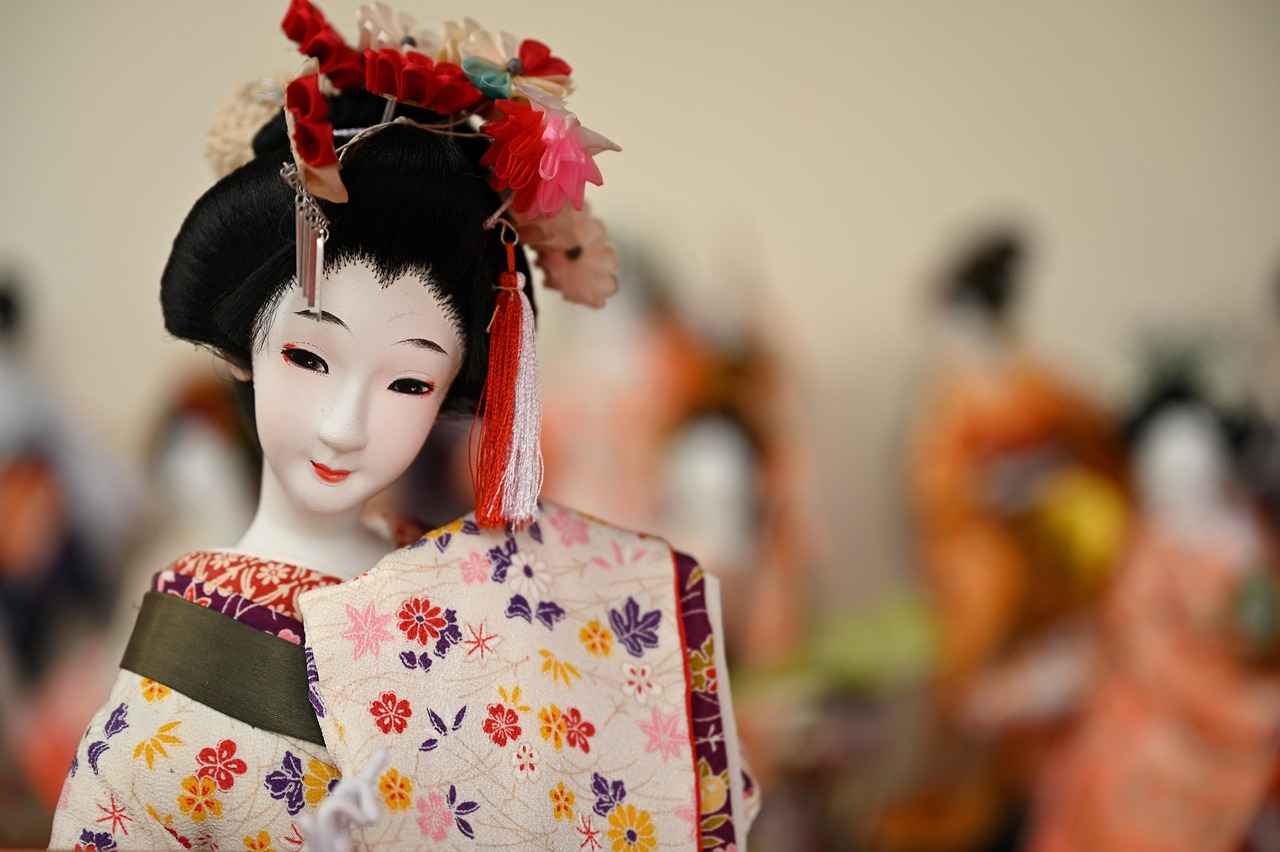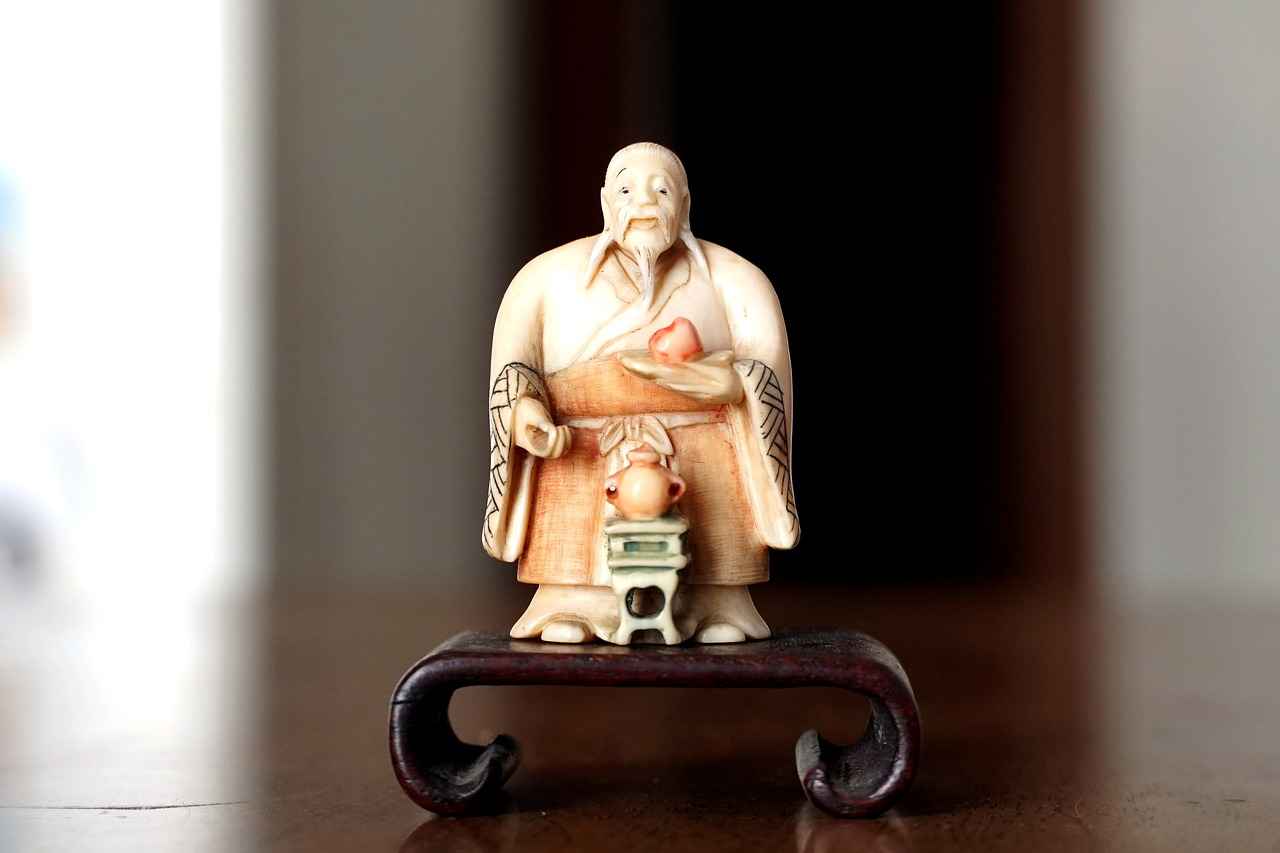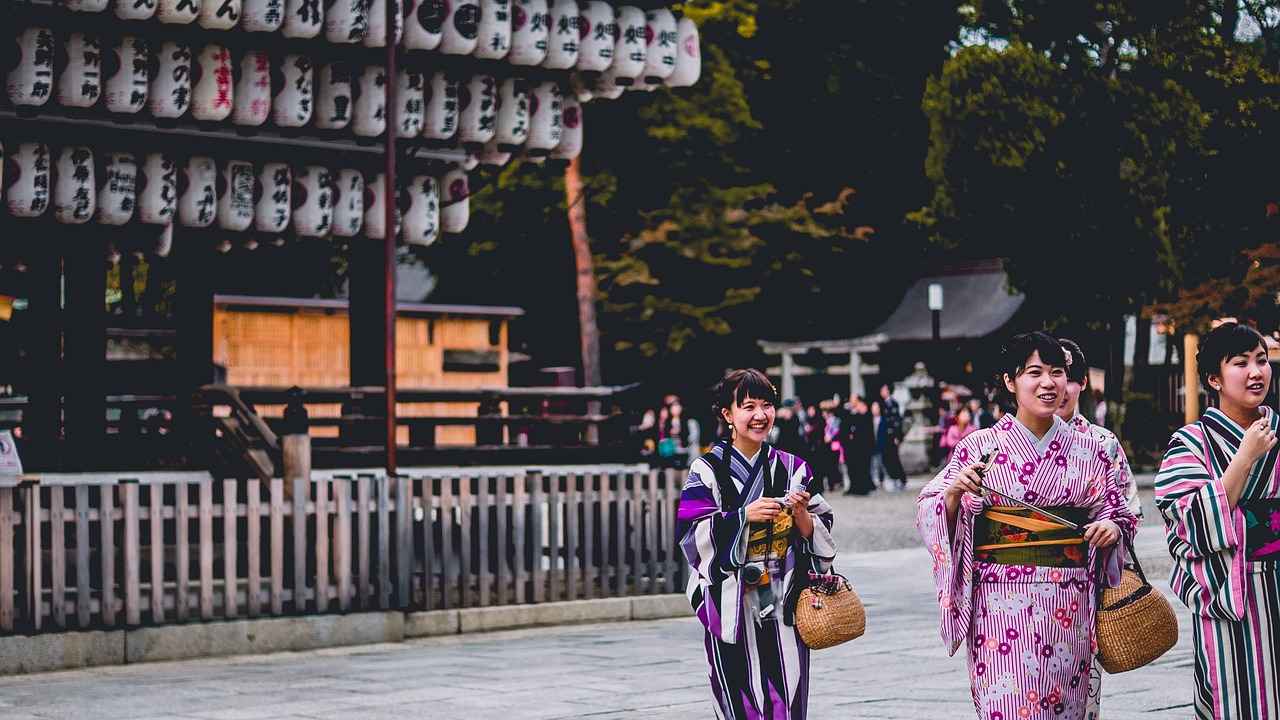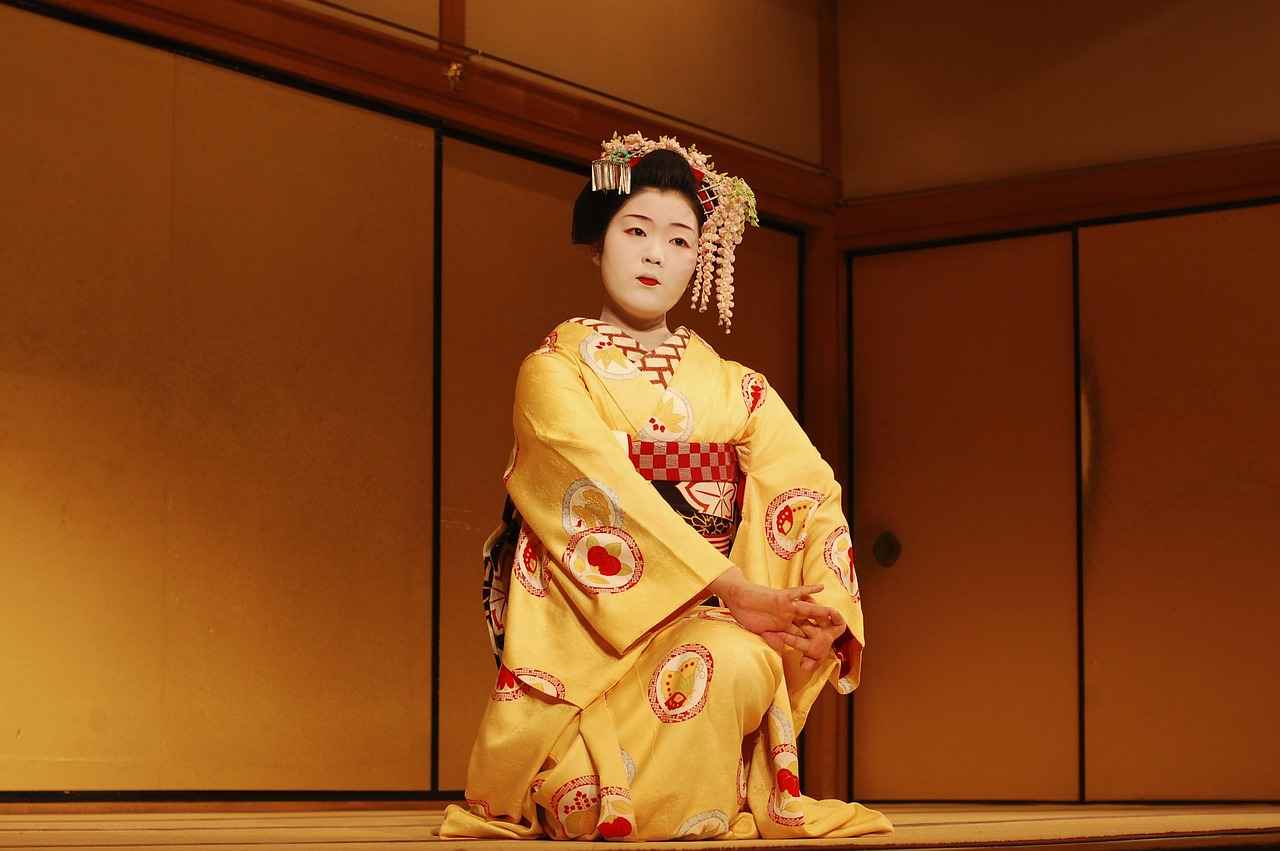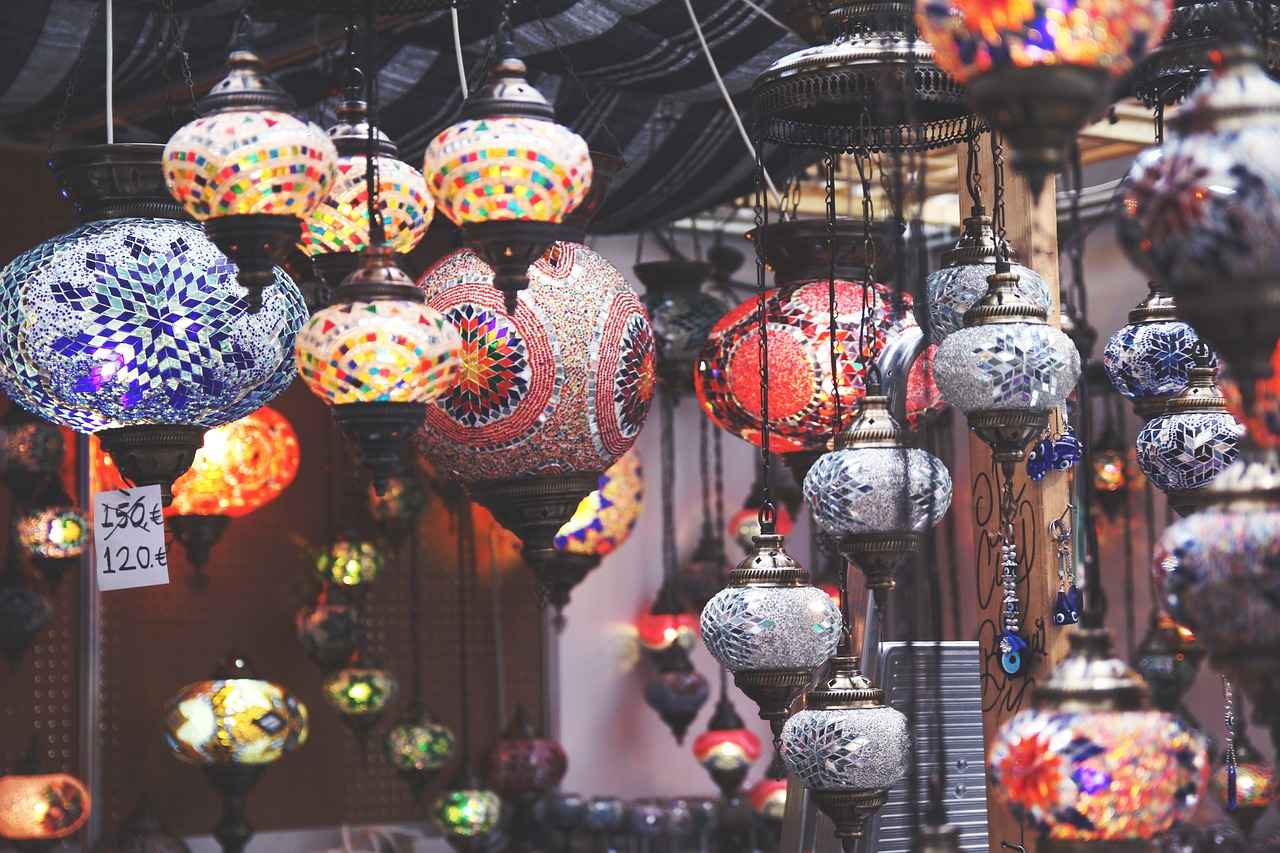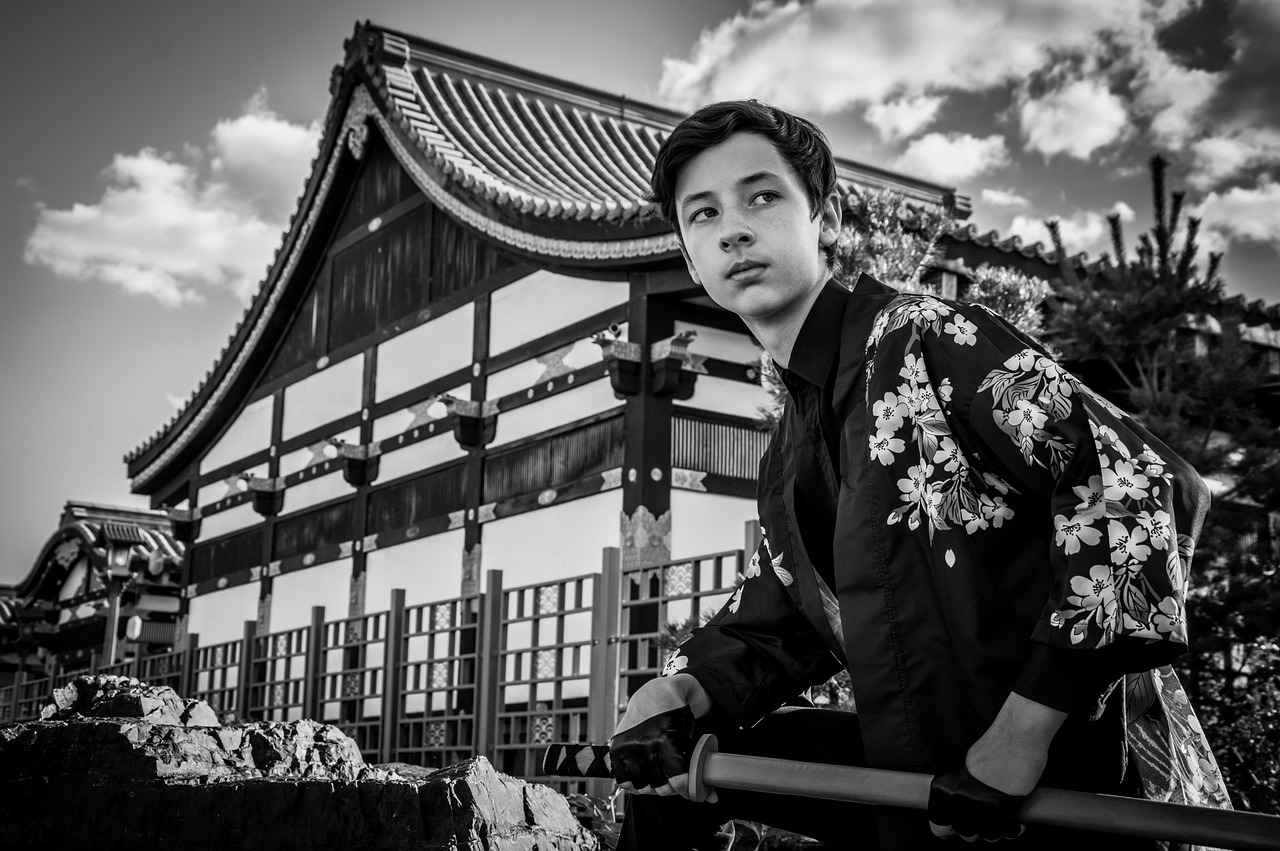This article delves into the cultural significance, historical context, and modern interpretations of the kimono, illustrating its evolution from traditional attire to a contemporary fashion statement.
Cultural Significance of the Kimono
The kimono is not merely clothing; it embodies the essence of Japanese culture and heritage. It represents tradition, identity, and social status. Each kimono tells a story, often reflecting the wearer’s background, age, and the occasion. Understanding the kimono’s role in Japanese society enhances appreciation for its artistry and meaning.
Historical Evolution of the Kimono
The kimono has a rich history that traces back to the Heian period, evolving through various epochs, including the Edo period, where it became a symbol of class distinction. The changes in style and fabric over centuries mirror shifts in societal values and fashion trends.
- Heian Period Kimonos: Known for their elaborate designs and vibrant colors, these kimonos highlighted the aesthetic values of the time.
- Edo Period Innovations: This era introduced unique fabric patterns and dyeing techniques, establishing different styles for various social classes.
Modern Adaptations of the Kimono
Today, kimonos are not confined to traditional settings. They have made their way into global fashion trends, with modern designers incorporating kimono elements into their collections, creating a fusion of styles that appeal to contemporary audiences.
Kimono in Popular Culture
The influence of the kimono extends beyond fashion into various aspects of popular culture, including film, art, and music. Its representation in modern media often symbolizes cultural heritage and beauty.
- Representation in Film and Television: Kimonos frequently appear in films, enhancing the narrative with cultural depth.
- Artistic Interpretations: Many contemporary artists draw inspiration from kimonos, celebrating their beauty in various art forms.
Global Influence of the Kimono
The kimono’s impact is felt worldwide, inspiring designers and enthusiasts alike. Western fashion has seen a significant incorporation of kimono-inspired elements, blending traditional aesthetics with modern styles.
- Western Fashion Incorporation: Notable designers have embraced kimono elements, showcasing them in their collections.
- Global Fashion Events: Fashion shows often celebrate the kimono, promoting cultural exchange and appreciation.
Conclusion: The Enduring Legacy of the Kimono
The kimono remains a powerful symbol of cultural identity and artistic expression. Its evolution reflects broader societal changes, ensuring its relevance in both traditional and contemporary contexts.
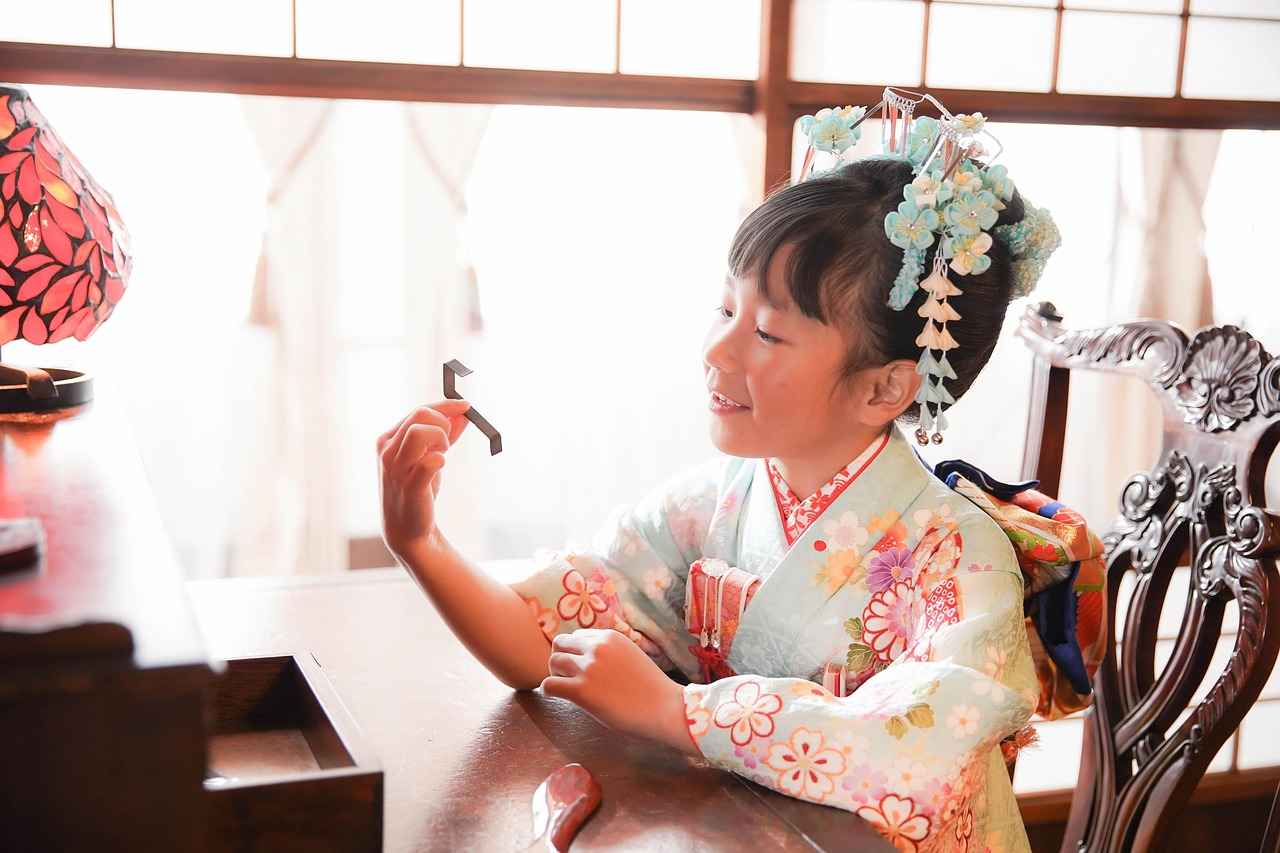
Cultural Significance of the Kimono
The kimono is not merely a garment; it embodies a rich tapestry of Japanese culture and history. This traditional attire serves as a profound symbol of identity, heritage, and social status within Japanese society. Understanding the cultural significance of the kimono allows for a deeper appreciation of its role in both historical and modern contexts.
Traditionally, the kimono is characterized by its distinctive design and craftsmanship. Each kimono is often adorned with intricate patterns, colors, and styles that convey specific meanings, reflecting the wearer’s age, marital status, and even the season. For instance, young women often wear brightly colored kimonos with floral designs during special occasions, while older women may opt for more subdued colors and patterns.
Moreover, kimonos are deeply intertwined with Japanese rituals and ceremonies. They are commonly worn during significant life events such as weddings, tea ceremonies, and festivals. Each occasion calls for a specific style, showcasing the kimono’s versatility and its integral role in cultural practices.
In contemporary Japan, while western-style clothing has become prevalent, the kimono remains a vital element of national pride and cultural identity. Many young people are now reinterpreting the kimono, incorporating it into modern fashion trends, which highlights its adaptability and enduring appeal. This fusion of traditional and contemporary styles illustrates the kimono’s significance as a bridge between the past and the present.
In conclusion, the kimono is more than just a piece of clothing; it is a cultural artifact that encapsulates the essence of Japanese identity and tradition. By understanding its significance, one can appreciate the deep-rooted values and history that it represents in Japanese society.
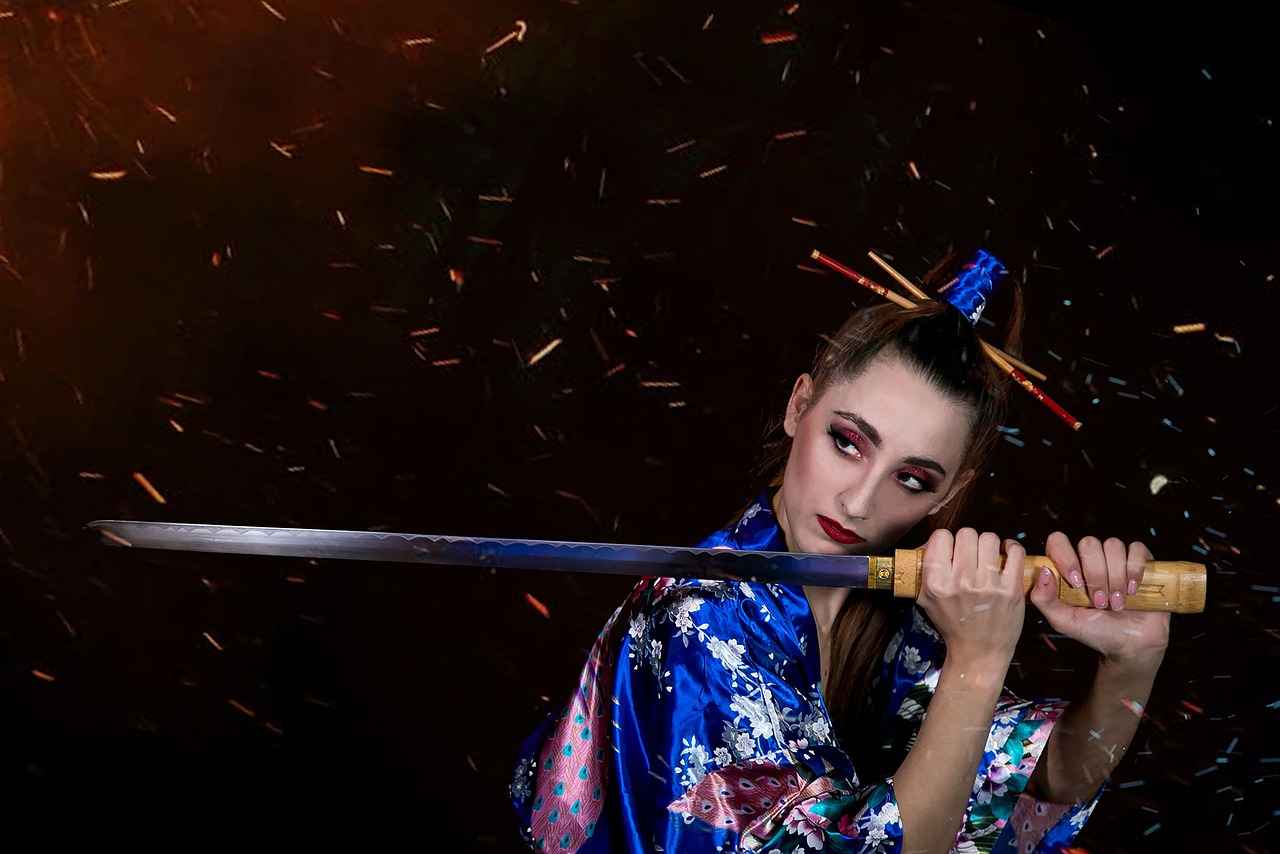
Historical Evolution of the Kimono
The kimono, a traditional garment of Japan, has a rich and fascinating history that reflects the changes in Japanese society and fashion over the centuries. Its evolution can be traced back to the Heian period (794-1185), a time when the kimono began to take shape as a distinct and elaborate form of attire. Initially, kimonos were simple, utilitarian garments, but as the Heian period progressed, they became more ornate, featuring intricate designs and vibrant colors that showcased the aesthetic values of the time.
During the Edo period (1603-1868), the kimono underwent significant transformations. It became a symbol of social status, with different styles representing various classes within society. The upper class wore kimonos made from luxurious fabrics adorned with unique patterns, while commoners had simpler designs. This era also saw the introduction of innovative dyeing techniques and fabric patterns, which further enriched the kimono’s visual appeal.
As Japan entered the modern era, the kimono faced challenges from Western fashion influences. However, instead of fading into obscurity, the kimono adapted and evolved. In the 20th century, it began to be embraced as a fashionable statement, with designers incorporating traditional elements into contemporary styles. Today, the kimono is not only worn during special occasions but has also found its place in everyday fashion, both in Japan and globally.
Modern adaptations of the kimono range from casual wear to high-fashion designs, demonstrating its versatility. Designers often experiment with fabrics, patterns, and cuts, creating unique interpretations that appeal to a broad audience. This evolution highlights the kimono’s enduring significance as a cultural icon, bridging the gap between tradition and modernity.
In conclusion, the historical evolution of the kimono is a testament to its resilience and adaptability. From its origins in the Heian period to its contemporary interpretations, the kimono continues to be a powerful symbol of Japanese culture, reflecting the dynamic nature of fashion and society throughout the ages.
Kimono Styles Through the Ages
The kimono, a traditional Japanese garment, has a rich history that spans centuries. Its evolution reflects the diverse cultural influences and historical contexts that have shaped Japanese society. In this section, we will explore the various styles of kimono that have emerged over time, each representing unique aspects of Japan’s heritage.
Heian Period Kimonos
The Heian period (794-1185) is known for its intricate and elaborate kimono designs. These kimonos often featured vibrant colors and complex patterns, showcasing the aesthetic values of the time. Layering techniques were commonly used, with women wearing multiple kimonos at once, known as jūnihitoe, which symbolized status and sophistication.
Edo Period Innovations
During the Edo period (1603-1868), the kimono became a symbol of class and wealth. Distinct styles emerged for different social classes, and unique fabric patterns, such as yuzen dyeing, became popular. This era saw the rise of the furisode, a long-sleeved kimono worn by young unmarried women, which represented youth and elegance.
Meiji Period Transformations
The Meiji period (1868-1912) marked a significant transition as Japan opened up to Western influences. Traditional kimonos began to incorporate Western styles, leading to the creation of hybrid garments. Despite these changes, many still wore kimonos during special occasions, maintaining a connection to their cultural roots.
Modern Adaptations
In contemporary fashion, the kimono has transcended its traditional roots, inspiring designers worldwide. Modern adaptations often blend traditional elements with contemporary aesthetics. Designers like Issey Miyake and Yohji Yamamoto have incorporated kimono motifs into their collections, showcasing the garment’s versatility and enduring appeal.
Conclusion
The diverse styles of kimono reflect not only the historical and cultural evolution of Japan but also the garment’s ability to adapt to changing times. From the elaborate designs of the Heian period to modern interpretations, the kimono remains a symbol of beauty and tradition, cherished both in Japan and around the world.
Heian Period Kimonos
The Heian period, spanning from 794 to 1185, marked a significant transformation in Japanese culture, particularly in the realm of fashion. During this era, the kimono evolved into a sophisticated garment that showcased the **aesthetic values** of the time. The intricate designs and layering techniques introduced during this period were not merely for visual appeal; they also conveyed social status and cultural identity.
One of the most notable aspects of Heian period kimonos was their **elaborate designs**. Craftsmen employed various techniques, including embroidery, dying, and weaving, to create stunning patterns that often featured motifs inspired by nature, such as flowers and landscapes. These designs were rich in symbolism, reflecting the **seasonal changes** and the aesthetic principles of the **Yamato** court.
| Aspect | Description |
|---|---|
| Color Palette | Vibrant colors were favored, with each hue representing different meanings and emotions. |
| Layering Techniques | Kimonos were often worn in layers, known as obijime, which added depth and complexity to the outfit. |
| Fabric Choices | Silk became the preferred fabric, prized for its beauty and luxurious feel. |
The layering of kimonos was particularly significant, as it allowed for variations in style and adaptability to different occasions. The outer layer, known as uchikake, was often left open to showcase the inner layers, creating a visually striking effect. This practice not only highlighted the craftsmanship involved but also demonstrated the wearer’s taste and sophistication.
In conclusion, the kimonos of the Heian period were more than just clothing; they were a reflection of the **cultural richness** and **artistic innovation** of the time. Their elaborate designs and vibrant colors continue to influence modern fashion, reminding us of the enduring legacy of this iconic garment.
Edo Period Innovations
in the kimono’s design and significance mark a pivotal era in Japanese history. During this time, which lasted from 1603 to 1868, the kimono evolved into a symbol of class and wealth. This transformation was not merely aesthetic; it was deeply intertwined with the social hierarchy of the time.
The Edo period saw the emergence of distinct styles of kimono that catered to different social classes, each with its unique characteristics. For instance, the nobility wore kimonos made from luxurious fabrics, often adorned with intricate patterns and vibrant colors. In contrast, the commoners opted for simpler designs, usually in more subdued tones. This differentiation helped to visually communicate social status within the community.
One of the most remarkable innovations of this period was the development of unique fabric patterns and dyeing techniques. Techniques such as yuzen dyeing, which allowed for detailed and colorful designs, became popular. This method involved hand-painting designs onto fabric before dyeing, resulting in stunning visual effects that captivated the public’s imagination.
Moreover, the Edo period also introduced the concept of seasonal kimonos, where specific colors and patterns were associated with different times of the year. This practice not only reflected the changing seasons but also allowed individuals to express their personal style within the confines of their social class.
As the kimono became more accessible to the middle class, it led to a flourishing of fashion trends and creativity. Artisans began to experiment with various materials, including silk and cotton, creating kimonos that were both beautiful and functional. This era laid the groundwork for the modern interpretations of the kimono we see today, blending traditional craftsmanship with contemporary fashion.
In conclusion, the innovations during the Edo period significantly shaped the kimono’s identity, making it a lasting symbol of Japanese culture and artistry. Its evolution from a practical garment to a status symbol reflects the complexities of Japanese society during this transformative era.
Modern Adaptations of the Kimono
have become a fascinating intersection of tradition and contemporary fashion, showcasing the garment’s adaptability and enduring appeal. As global fashion evolves, the kimono has emerged as a key influence, inspiring designers around the world to incorporate its unique elements into their collections.
In recent years, fashion houses have embraced the kimono’s distinctive silhouette, characterized by its wide sleeves and wrap-around design. This has led to the creation of hybrid pieces that blend traditional kimono features with modern cuts and fabrics. Designers like Issey Miyake and Yohji Yamamoto have been at the forefront of this movement, infusing their collections with vibrant colors and intricate patterns reminiscent of classic kimonos, yet tailored for contemporary wear.
Moreover, the kimono’s versatility allows for various interpretations. For instance, some designers opt for casual streetwear styles, incorporating kimono-inspired jackets and robes into everyday outfits. Others focus on high-fashion interpretations, creating luxurious evening wear that pays homage to the kimono’s elegance while appealing to modern aesthetics.
Fashion events around the world have also played a pivotal role in showcasing kimono adaptations. Shows such as Tokyo Fashion Week highlight collections that celebrate this cultural icon, promoting a blend of heritage and innovation. This not only elevates the kimono’s status in the fashion industry but also fosters a greater appreciation for Japanese culture globally.
Additionally, the rise of social media has further propelled the kimono into the spotlight. Influencers and fashion enthusiasts share their unique takes on the kimono, often pairing it with Western styles to create eclectic outfits that resonate with a diverse audience. This trend has sparked a renewed interest in traditional garments, encouraging a younger generation to explore their cultural roots.
In conclusion, the kimono’s evolution into modern fashion reflects a broader trend of cultural exchange and adaptation. As designers continue to innovate while respecting tradition, the kimono remains a powerful symbol of artistic expression and identity in the global fashion landscape.
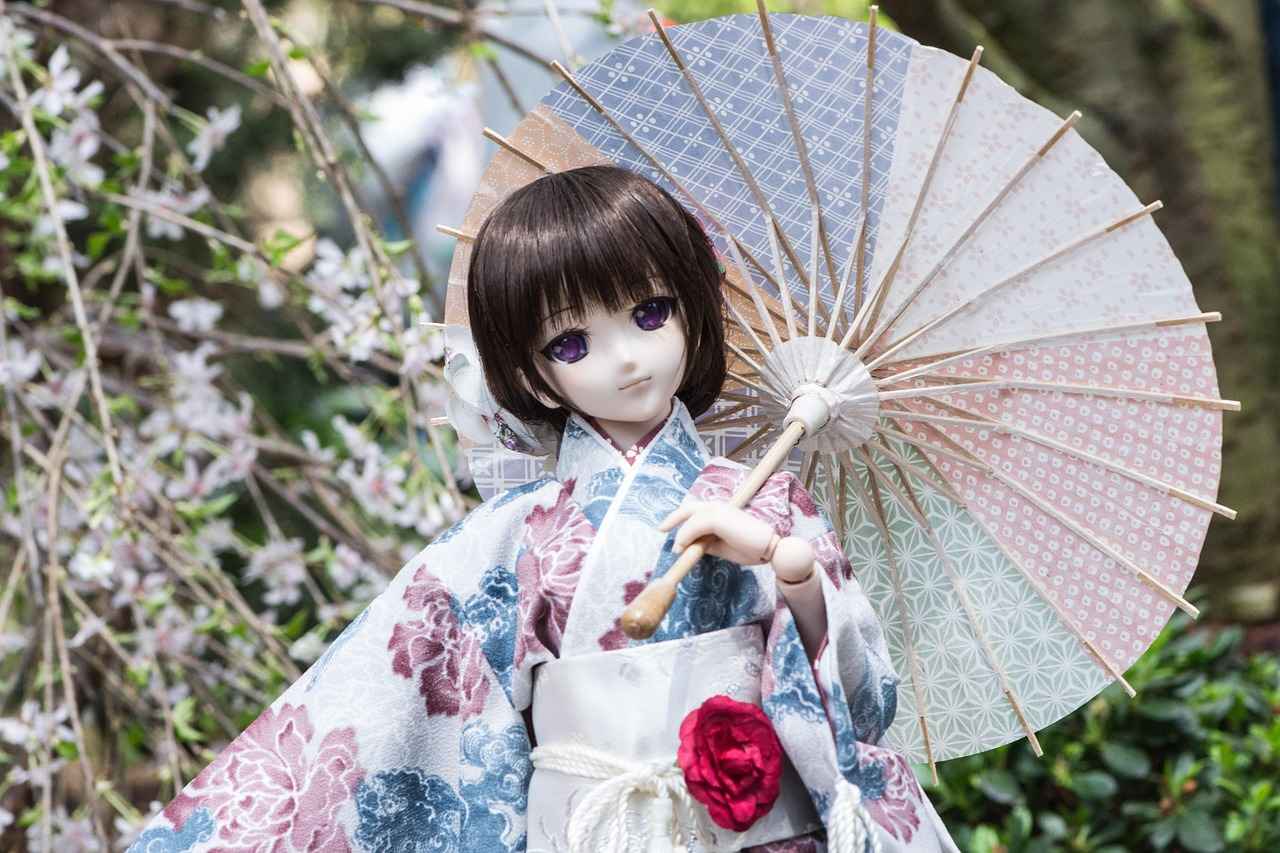
Kimono in Popular Culture
The kimono is not just a traditional garment; it has become an enduring symbol that transcends its cultural origins, making a significant impact on various facets of popular culture. This section delves into the multifaceted representation of the kimono in modern media, examining how it has been embraced and reinterpreted in film, art, and music.
Kimonos frequently appear in both films and television series, often serving as a visual representation of Japanese heritage and beauty. Notable examples include:
- Memoirs of a Geisha: This film showcases the intricate beauty of kimonos, highlighting their role in Japanese culture.
- The Last Samurai: Kimonos are used to depict historical accuracy and cultural depth, contributing to the film’s overall aesthetic.
- Kill Bill: The use of kimonos in this film symbolizes strength and tradition, contrasting with modern themes.
These representations not only enhance the visual storytelling but also shape public perception, often romanticizing the kimono as a symbol of grace and elegance.
Artists around the world draw inspiration from the kimono, creating works that celebrate its beauty and cultural significance. Contemporary artists incorporate kimono motifs and styles into their artwork, reflecting:
- Fashion Illustration: Many fashion illustrators use kimonos to convey a sense of elegance and sophistication.
- Mixed Media: Artists blend traditional kimono patterns with modern techniques, creating unique pieces that highlight the garment’s relevance.
- Photography: Photographers often capture the kimono in various settings, showcasing its versatility and timeless appeal.
This artistic exploration not only preserves the kimono’s legacy but also invites new interpretations that resonate with contemporary audiences.
The influence of the kimono extends into the world of music and performance art. Musicians and performers often don kimonos during their acts to evoke a sense of cultural pride. Notable mentions include:
- Traditional Japanese Music: Many artists wear kimonos to honor their cultural roots during performances.
- Pop Culture Icons: Modern musicians incorporate kimono elements into their fashion, using them as a statement of cultural fusion.
By integrating kimonos into their performances, artists contribute to a broader dialogue about cultural identity and appreciation.
In conclusion, the kimono’s representation in popular culture is a testament to its enduring legacy. Whether through film, art, or music, the kimono continues to inspire and captivate audiences, ensuring its place as a significant cultural symbol.
Representation in Film and Television
The kimono, a traditional Japanese garment, has made a significant impact in the realms of film and television, often representing not just fashion, but also the rich cultural heritage of Japan. Its presence in various media forms has played a pivotal role in shaping public perception and appreciation for this iconic attire.
In numerous films, kimonos are utilized to convey a sense of elegance and tradition. For instance, in the acclaimed movie Memoirs of a Geisha, the intricate designs and vibrant colors of the kimonos worn by the characters serve as a visual representation of their cultural identity and social status. The film’s portrayal of the kimono has sparked interest and admiration for this traditional garment among global audiences.
Television series also frequently feature kimonos, reinforcing their status as symbols of grace and beauty. A notable example is the popular anime series Spirited Away, where the protagonist, Chihiro, dons a beautifully designed kimono that reflects her transformation throughout the story. This depiction not only highlights the aesthetic appeal of the kimono but also emphasizes its significance within Japanese storytelling and folklore.
Moreover, the kimono’s representation in media has evolved to include modern interpretations. In shows like Kimono Girls, contemporary characters wear kimonos in everyday settings, showcasing their versatility and relevance in today’s fashion landscape. This shift helps to bridge the gap between traditional and modern styles, appealing to younger generations and fostering a renewed interest in the garment.
As kimonos continue to appear in films and television, they serve as a powerful reminder of Japan’s cultural legacy. The portrayal of kimonos in popular media not only celebrates their beauty but also encourages audiences worldwide to appreciate and respect the traditions they embody.
Artistic Interpretations
The kimono has long been a source of inspiration for artists, transcending mere fashion to become a profound symbol of cultural identity and artistic expression. In contemporary art, the kimono is not just depicted as a garment; it represents a rich tapestry of history, tradition, and innovation.
Artists from various backgrounds have embraced the kimono, incorporating its elements into their work to celebrate its beauty and significance. This section explores the diverse ways in which the kimono is represented in modern artistic expressions.
- Visual Arts: Many contemporary artists utilize the kimono as a central motif in their paintings and sculptures. The intricate patterns and vibrant colors of the kimono serve as a canvas for exploring themes of identity, heritage, and femininity. Artists like Yayoi Kusama have used the kimono in their works to challenge traditional notions of beauty and cultural representation.
- Textile Art: The textile medium offers a unique platform for artists to reinterpret the kimono. By using traditional kimono fabrics, artists create innovative pieces that honor the past while pushing the boundaries of contemporary art. This fusion of old and new often sparks discussions about cultural appropriation and appreciation.
- Photography: Photographers have also found inspiration in the kimono, capturing its elegance and grace in various settings. Through the lens, the kimono becomes a symbol of cultural pride and personal narrative, showcasing the wearer’s connection to their heritage.
Moreover, the kimono’s presence in art reflects broader societal changes, as artists engage with issues such as globalization and cultural exchange. The kimono, once confined to traditional contexts, now appears in diverse artistic landscapes, inviting viewers to reflect on its evolving significance.
In conclusion, the artistic interpretations of the kimono serve as a testament to its enduring legacy. As artists continue to draw from its rich symbolism, the kimono remains a powerful medium for exploring identity, culture, and the complexities of modern life.

Global Influence of the Kimono
The kimono is not merely a traditional Japanese garment; it has emerged as a significant influence in the global fashion landscape. This section delves into the ways in which the kimono has inspired designers and fashion enthusiasts around the world, resulting in a fascinating fusion of styles.
- Cross-Cultural Collaborations: Many fashion designers have integrated kimono elements into their collections, creating unique pieces that celebrate both Eastern and Western aesthetics. These collaborations often highlight the intricate patterns and flowing silhouettes characteristic of the kimono.
- Street Fashion Trends: In urban centers worldwide, the kimono has been embraced by street fashion enthusiasts. From oversized kimono jackets to accessorized looks, this garment has transformed into a versatile staple that blends seamlessly with contemporary styles.
- Fashion Weeks and Global Platforms: Major fashion events, such as Paris Fashion Week and New York Fashion Week, have featured kimono-inspired designs. These platforms not only showcase the beauty of the kimono but also promote cultural appreciation and understanding.
- Influence on Casual Wear: The relaxed fit and elegant draping of the kimono have influenced casual wear, with many brands producing kimono-style robes and jackets that cater to modern lifestyles. This adaptability has made the kimono a favorite among fashion-forward individuals.
Moreover, the kimono’s impact is evident in the rise of kimono-themed fashion lines that aim to preserve traditional techniques while appealing to a global audience. Designers are increasingly focused on sustainability, often using eco-friendly materials and ethical production practices, further enhancing the kimono’s relevance in today’s fashion world.
In conclusion, the kimono’s global influence is a testament to its enduring appeal and cultural significance. As it continues to inspire fashion designers and enthusiasts alike, the kimono serves as a bridge between tradition and modernity, enriching the fashion narrative across the globe.
Western Fashion Incorporation
In recent years, the influence of the kimono on Western fashion has become increasingly prominent, as designers seek to blend traditional Japanese aesthetics with modern styles. This fusion not only celebrates the beauty of the kimono but also introduces its rich cultural heritage to a global audience.
Key designers such as Issey Miyake and Yohji Yamamoto have been at the forefront of this movement, incorporating kimono-inspired elements into their collections. For instance, Miyake’s innovative use of pleating techniques mirrors the flowing lines of a kimono, while Yamamoto’s designs often feature oversized silhouettes reminiscent of traditional garments. These adaptations showcase the versatility of the kimono, allowing it to be reinterpreted in various contexts.
Moreover, the influence of the kimono extends beyond high fashion. Many contemporary brands are now integrating kimono sleeves, intricate patterns, and vibrant colors into their ready-to-wear collections. This shift reflects a growing appreciation for cultural diversity in fashion, encouraging designers to draw inspiration from global traditions.
Fashion events such as New York Fashion Week and Paris Fashion Week have also played a significant role in promoting this trend. Designers frequently showcase collections that pay homage to the kimono, fostering a dialogue between different cultures and highlighting the garment’s enduring appeal.
In conclusion, the incorporation of kimono-inspired elements into Western fashion represents a celebration of cultural exchange. As designers continue to explore this rich tradition, the kimono’s legacy is not only preserved but also redefined, ensuring its relevance in the ever-evolving landscape of fashion.
Global Fashion Events
have become pivotal in showcasing the kimono, a traditional Japanese garment that transcends its cultural roots to become a celebrated symbol of fashion worldwide. These events not only highlight the beauty and craftsmanship of the kimono but also serve as platforms for cultural exchange and appreciation.
Throughout the years, various fashion weeks and global exhibitions have featured the kimono, allowing designers to reinterpret this classic attire in innovative ways. For instance, during the Tokyo Fashion Week, designers often present collections that fuse traditional kimono elements with modern silhouettes, attracting attention from international audiences and critics alike.
Moreover, events like the Paris Haute Couture Week have seen the kimono being integrated into high fashion, with renowned designers incorporating its aesthetics into their runway shows. This fusion not only elevates the kimono’s status in the fashion industry but also promotes a deeper understanding of Japanese culture among global audiences.
| Fashion Event | Notable Designers | Kimono Influence |
|---|---|---|
| Tokyo Fashion Week | Issey Miyake, Junya Watanabe | Traditional fabrics and patterns |
| Paris Haute Couture Week | Yohji Yamamoto, Comme des Garçons | Modern silhouettes with kimono elements |
| New York Fashion Week | Alexander Wang, Vera Wang | Kimono-inspired accessories |
Furthermore, these global platforms facilitate cultural dialogue, as designers from different backgrounds collaborate with Japanese artisans, ensuring that traditional techniques are preserved while also being adapted for contemporary tastes. This collaboration not only enriches the fashion narrative but also fosters mutual respect and understanding among cultures.
In conclusion, global fashion events play a crucial role in celebrating kimono fashion, promoting a blend of tradition and innovation. As the kimono continues to inspire designers around the world, its legacy as a cultural icon remains strong, ensuring that it is appreciated not just as a garment, but as a vital part of Japan’s cultural heritage.
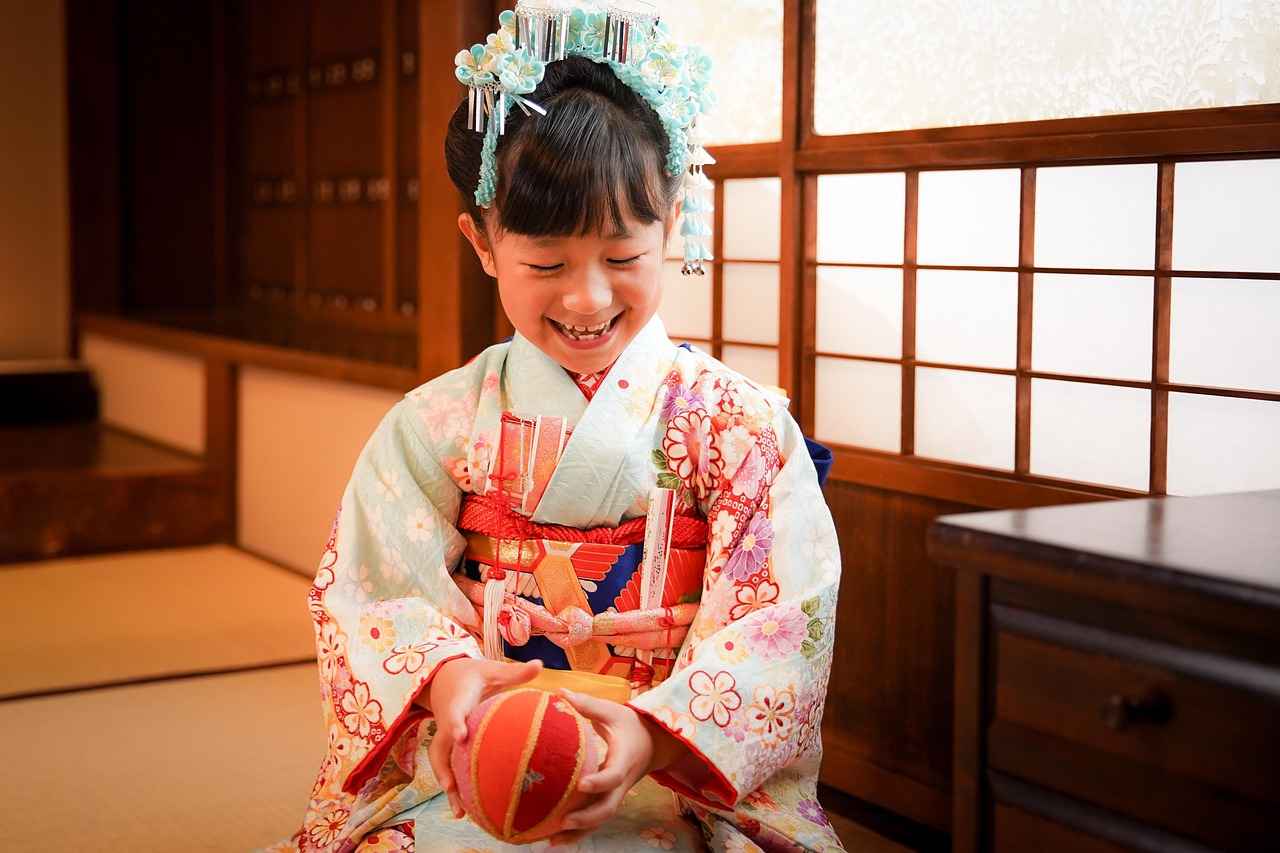
Conclusion: The Enduring Legacy of the Kimono
The kimono, a traditional Japanese garment, is not merely a piece of clothing; it is a profound symbol of cultural identity and artistic expression. Throughout history, the kimono has adapted to reflect the socio-cultural dynamics of Japan, ensuring its relevance in both traditional and contemporary contexts. This article delves into the enduring legacy of the kimono, exploring its significance and evolution.
Initially, the kimono served as a representation of social status and cultural heritage. Each design, color, and fabric choice conveyed specific meanings, often indicating the wearer’s age, marital status, and even seasonal appropriateness. For instance, the vibrant hues of a furisode (a long-sleeved kimono) are typically worn by young, unmarried women during festive occasions, highlighting the garment’s role in marking significant life events.
As Japan transitioned through various historical periods, the kimono evolved, embracing influences from foreign cultures while maintaining its unique essence. During the Edo period, for example, the kimono became a canvas for intricate patterns and elaborate designs, showcasing the artistry of fabric dyeing and weaving techniques. This period marked a time when kimonos were not only functional but also a form of artistic expression, reflecting the aesthetic values of the time.
In contemporary society, the kimono has transcended its traditional roots, becoming a source of inspiration for fashion designers worldwide. Modern interpretations often blend the classic elements of the kimono with Western fashion trends, leading to innovative designs that appeal to a global audience. Fashion shows frequently feature kimono-inspired collections, promoting a cultural exchange that celebrates this timeless garment.
In conclusion, the kimono remains an enduring symbol of cultural identity and artistic expression. Its ability to adapt and resonate with changing societal values ensures its continued relevance, making it a cherished part of both Japanese heritage and global fashion. As we appreciate the kimono today, we recognize its significance not just as clothing, but as a living testament to the rich tapestry of cultural history.
Frequently Asked Questions
- What is the cultural significance of the kimono?
The kimono is not just a piece of clothing; it embodies Japan’s rich traditions and cultural identity. Each kimono tells a story, reflecting the wearer’s social status, age, and even the season. It’s a beautiful representation of Japan’s heritage.
- How has the kimono evolved over time?
From the elegant designs of the Heian period to the more structured styles of the Edo period, the kimono has transformed significantly. Today, it blends traditional elements with modern fashion, showcasing its adaptability and timeless appeal.
- Are kimonos still worn today?
Absolutely! While kimonos are often reserved for special occasions like weddings and festivals, many people incorporate kimono elements into their daily wear. Designers worldwide are also inspired by kimonos, proving that this garment is far from outdated.
- How does the kimono influence global fashion?
The kimono has made waves in international fashion, inspiring designers to create collections that fuse traditional Japanese aesthetics with modern styles. This cultural exchange enriches the global fashion scene, making the kimono a beloved symbol of creativity.
- What role do kimonos play in popular culture?
Kimonos frequently appear in films, art, and music, symbolizing beauty and cultural heritage. They help promote awareness and appreciation of Japanese culture, making them a significant element in both traditional and contemporary media.




